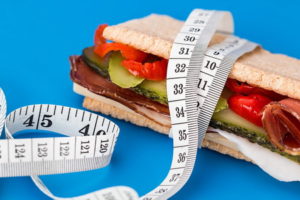In our previous article, we talked about the premises of the Paleo Diet and the list of foods that are allowed and prohibited in the diet routine. Here, will shed some light on the benefits and side effects associated with this diet.
The purpose of this article is to give you a comprehensive picture of the Paleo Diet in order to make you aware of all the related aspects if you are going to adopt its diet recommendations.
Benefits of Adopting Paleo Diet Plans
There is a whole range of health benefits associated with the Paleo diet and endorsed by scientific research.
Ensures the Health of Body Cells and Functions
Foods prescribed in the Paleo diet have a perfect balance of healthy fats which is rare to be seen in other diet plans. Some diet routines increase the ratio while others cut down the consumption of healthy fats.
Let’s take the example of omega-3 fatty acids. These are essential fats and an integral part of intracellular communication, in the formation of hormones regulating blood clotting. They also play an important role in the better function of arteries (contraction and relaxation). Omega-3 fatty acids are also important for balancing the homeostasis associated with inflammation.
The human body is able to produce other fats but it can’t make omega-3 fatty acids on its own. Therefore, one must get them through food. Seafood, vegetable oils, leafy vegetables, and nuts are rich in omega-3 fatty acids and all of them are essential food items of any Paleo diet chart. Getting ample amounts of omega-3 fatty acids helps in improving the overall physiological functions to ensure a healthy state of the body.
Accelerates Metabolism, Helps in Maintaining Healthy Weight
The Paleo diet increases the metabolic rate of an individual by simply increasing the muscle content of the body. Lean cuts of all red meats, crammed with proteins, are permissible to eat in the Paleo diet, unlike most of the diet plans.
A high intake of protein in your daily diet helps increase the muscle mass of your body. Muscle cells are very active and therefore need more energy to function. By adopting any Paleo diet plan, you will naturally replace fat cells with muscle cells which will help you in maintaining your weight in healthy BMI levels.
Guarantees Healthy Digestive System
Most of the contemporary food items are loaded with processed sugar and fats which overwhelm our stomach and digestive tract because they are not designed to process such dietary items. Excessive use of these foods usually results in the onset of ulcers and leaky gut syndrome.
The Paleo diet prohibits all such manmade foods so that your digestive system can function at its best.
Ensures Sufficient Consumption of Micronutrients
By allowing leafy and non-starchy vegetables and nuts in its menus, the Paleo diet ensures that you are getting all the essential vitamins and minerals necessary for the healthy functioning of the body.
Side Effects and Criticism of the Paleo Diet
With all its benefits, the Paleo diet is also criticized due to some of its shortcomings and side effects.
Cutting Down the Entire Range of Dairy Products Leads to Osteoporosis
Many nutritionists heavily criticize the Paleo diet because it excludes all dairy products from dietary consumption. Low-fat dairy items are necessary to fulfill the body’s needs for Vitamin D and calcium. Cutting down the dairy products for a long time can result in the development of osteoporosis.
Renal Damage
Consuming high amounts of proteins and very low carbohydrates has detrimental effects on kidneys.
High Levels of Cholesterol
People who are already susceptible to cholesterol problems and heart diseases can face complications with more consumption of red meat even if it’s lean.
Body Fatigue
Low amounts of carbohydrates and sugar in the diet can also lead to body fatigue in some individuals, especially during increased physical activity.
In order to get the maximum benefits out of a Paleo diet plan, it is important to have it devised with moderate consumption of every food item. Eating excessive red meat in the name of the Paleo diet will surely get you in trouble.
Similarly, you can have a modified Paleo diet plan by including healthy dairy products in it. Finally, it is necessary to consult your physician or any seasoned nutritionist before getting on any diet plan.


